For one whole year, San Francisco-based designer Karen Cheng honed her dancing skills every day and recorded her progress on camera. Here's the result.
Submitted by: Unknown (via Dance In a Year)
For one whole year, San Francisco-based designer Karen Cheng honed her dancing skills every day and recorded her progress on camera. Here's the result.
Submitted by: Unknown (via Dance In a Year)
Your student ID may not get you into a bar, but it can help you get some sweet deals and promotions. As you prepare to go back to school, you might be itching to get some new gear but don’t have the resources to splurge on everything your heart desires. Fortunately, many of the biggest brands offer discounts to make it easier for students to fill their backpacks with the latest and greatest gadgets
We show you 10 of the best back-to-school tech offers. Take advantage of these discounts and, when you drag your unwilling self to class, you’ll at least have a great new laptop and tablet to make sitting through that chemistry lecture just a bit more bearable.
With Apple's Education pricing, you save up to $200 on a new Mac laptop, with both sizes of the MacBook Air costing $50 less than retail while the MacBook Pro with Retina receives a $100 discount and the regular MacBook Pro goes for $200 less. Also, Apple is giving away $100 App store credit with each Mac purchase and $50 with each iPad and iPhone purchase.
    
|
    
|
 |
Aaron Carroll draws our attention today to a new study in JAMA that compares American health outcomes with those in other rich countries. Overall, we're now in 28th place, sandwiched in between Chile and Poland. The massive chart below shows how we do on treating specific diseases. We're 31st on diabetes, 16th on breast cancer, 32nd on COPD, and (in our best showing) 8th on colon cancer.
The usual lazy response to studies like this is to claim that Americans are just less healthy than residents of other countries because we're fat and we lead crappy lifestyles. Maybe so. But that doesn't explain why we're not just bad, we're getting worse:
Between 1990 and 2010, among the 34 countries in the OECD, the US dropped from 18th to 27th in age-standardized death rate. The US dropped from 23rd to 28th for age-standardized years of life lost. It dropped from 20th to 27th in life expectancy at birth. It dropped from 14th to 26th for healthy life expectancy. The only bit of good news was that the US only dropped from 5th to 6th in years lived with disability.
We don't have the best healthcare in the world. We just don't. We have the most expensive healthcare in the world and the best-paid doctors in the world, but that's it. On pretty much every other measure, we suck.

By popular demand, Stolidus Simulations has released Robot Vacuum Simulator 2013, the world's only simulation game that puts the player in the shoes of an automated vacuum cleaner. This sequel title to last year's Robot Vacuum Simulator 2012 now puts you in first-person control of the robot in a 3D landscape, where you must maneuver its sleek round body through a messy apartment to the background tune of smooth jazz. The only way this game could get better is if there was a DJ Roomba patch.
Submitted by: Unknown (via The Verge)

[Doog] builds plastic models, and like anyone who makes really small stuff, he needed a good photo booth to show off his wares and techniques. He was working with the very common ‘poster board and work light’ setup we’ve all put together, but after photoshopping seam lines one too many times, he decided to upgrade his booth to something a little better.
The new setup consists of an aluminum frame with a 40×80 inch sheet of translucent plexiglass forming the bottom and backdrop of the booth. Two lights in diffuser bags illuminate the subject from the top, while the old worklights are attached to the bottom of the table frame to light the subject from beneath.
Compared to the ‘poster board and work light’ technique of the past, [Doog]‘s new photo booth is absolutely incredible for taking pictures of very small things. This model of a Spitfire looks like it’s floating and this snap of a Thunderbolt is good enough to grace magazine covers.
Of course this photobooth isn’t just limited to models, so if you’re looking at taking some pictures of hand-soldered BGA circuits in the future, you may want to think about upgrading your studio setup.

A few years ago, I worked at a web design agency as a product manager. The part of the job I loved the most was working on product with our design team and clients. Unfortunately, this was only about 10 percent of the work that I actually got to do. The majority of the time, I was trying to control the constant flow of stuff–keeping track of meeting notes, searching for files, and trying to stay up-to-date with the latest technology news.
I was mentally exhausted. I’d get home feeling that I hadn’t really accomplished anything. Once I left the agency and started ooomf, I wanted to fix how I approached consumption in my life. Over the last few years, I’ve discovered ways to reduce the noise of stuff around me so I can focus on creation and have more time for the things that matter most. The last year has been the most productive of my life and I owe a lot of it to understanding the importance of decreasing how much I consume and coming up with ways to cut clutter.
You collect things for a number of reasons–maybe you think you’ll need to use it later, it has sentimental value, or you spent good money on it so you feel you need to keep the item, even if you haven’t touched or used it in weeks, months, or years. You might be holding on to that book you bought a year ago that you swear you’ll read or those killer pair of shoes that you’ll bring out for just the right occasion.
But the reality is, you probably made a mistake in buying those things and it literally hurts your brain to come to terms with that fact. Researchers at Yale recently identified that two areas in your brain associated with pain, the anterior cingulate cortex and insula, light up in response to letting go of items you own and feel a connection towards:

This is the same area of the brain that lights up when you feel physical pain from a paper cut or drinking coffee that’s too hot. Your brain views the loss of one of your valued possessions as the same as something that causes you physical pain. And the more you’ve commited emotionally or financially to an item, the more you want to keep it around.
When it comes to physical things, merely touching an item can cause you to become more emotionally attached to it. In this study, researchers gave participants coffee mugs to touch and examine prior to participating in an auction. The researchers varied the amount of time the participants were able to handle the mugs to see if this would have an effect on the amount of money participants would be willing to spend on the mugs during the auction.
The results of the study showed that participants who held the mugs longer, were willing to pay over 60 percent more for the mugs than participants who hed the mugs for shorter periods. The study concluded, the longer you touch an object, the greater the value you assign to it.
Apple is familiar with the effect of touch on your psychology and has brilliantly designed its retail stores to help you build an emotional attachment to their products. Here’s a shot of an Apple Store:

Author Carmine Gallo is writing a book about the ins and outs of the Apple Store. Gallo explains that everything in the Apple Store is designed for you to touch and play with, to make you feel like it’s your own. Gallo states:
The main reason notebook computers screens are slightly angled is to encourage customers to adjust the screen to their ideal viewing angle…The ownership experience is more important than a sale.
When you introduce new items into your life, you immedietely associate value with these items,making it harder for you to give them up in the future. This psychological connection to things is what leads to the accumulation of stuff.
Whether it be your closet or office desk, excess things in your surroundings can have a negative impact on your ability to focus and process information. That’s exactly what neuroscientists at Princeton University found when they looked at people’s task performance in an organized versus disorganized environment. The results of the study showed that physical clutter in your surroundings competes for your attention, resulting in decreased performance and increased stress.
A team of UCLA researchers recently observed 32 Los Angeles families and found that all of the mothers’ stress hormones spiked during the time they spent dealing with their belongings. Similar to what multitasking does to your brain, physical clutter overloads your senses, making you feel stressed, and impairs your ability to think creatively.
Files on your computer, notifications from your Twitter and Facebook accounts, and anything that goes “ping” in the night competes for your attention. This creates a digital form of clutter that erodes your ability to focus and perform creative tasks. Mark Hurst, author of Bit Literacy, a New York Times best seller on controlling the flow of information in the digital age, put it best when he said:
Bits are a new material.
When you have to-do items constantly floating around in your head or you hear a ping or vibrate every few minutes from your phone, your brain doesn’t get a chance to fully enter creative flow or process experiences. When your brain has too much on its plate, it splits its power up. The result? You become awful at:
The overconsumption of digital stuff has the same effect on your brain as physical clutter.
I like to keep things neat but when I used to clean my room to perfection, my mom would still see that same room as a disaster. Everyone’s tolerance for clutter is different. Researchers have even found that certain people need a bit of a mess in their surroundings to feel inspired and get work done, stating that:
A clean desk can be seen as a dormant area, an indication that no thought or work is being undertaken.
For instance, if you look at this photo of the home office of Steve Jobs, it’s not exactly the picture you’d expect of a zen-like visionary obsessed with less:

On the other hand, there’s TreeHugger founder Graham Hill, who traded in his million dollar mansion for a 420 square foot apartment that only has the bare essentials. His kitchen consists of 12 salad bowls and utensils:

In an interview with the New York Times, Hill stated:
I like material things as much as anyone. I studied product design in school. I’m into gadgets, clothing and all kinds of things. But my experiences show that after a certain point, material objects have a tendency to crowd out the emotional needs they are meant to support.
While clutter has been shown to negatively effect your performance, it is your perception of clutter that matters, not someone else’s.
If having a notebook, pen, or a photo of your significant other on your desk, doesn’t feel like clutter to you, then it’s not.
You should seek to create spaces that make you feel at ease.
There are millions of sources of information and things for you to consume so it’s important to figure out a way to control these streams so you have more time to do things that matter.
Here’s 4 things that have been working for me:
One of the principals of good design is constraints. You can apply this same theory to create a system for mastering consumption. For instance, set a limit for how many people you follow on Twitter, how many books you buy, or how many apps you own. I set a limit of 200 people I follow on Twitter and I don’t buy any books until I’ve finished the current book I’m reading. I also don’t purchase or download any apps until I need them.
There will always be more information available than you can consume so set limits so you’re no longer simply trying to just get through it all but rather enjoying more of what you consume.
Cutting down on your storage space can do wonders for limiting consumption. Try cutting your closet down to 10 hangers or force yourself to use a small bag when you travel. Do you really need a walk-in closet or a rack for all your shoes? Try constraining your storage spaces and you’ll quickly identify what you really need.
Every month, review your closet looking for items you haven’t worn. If it’s summer and you have t-shirts, shorts, or shoes that you aren’t using, put them in a bag to sell on eBay or Craigslist or give them away.
Another option is to try and get rid of one item a week until you’ve cut your belongings down to the things you actually use.
If you work on a computer, having a cluttered desktop every time you turn on your computer can give you a constant uneasy feeling. At the end of each day, remove every file from your desktop. If you don’t have an immediate place to move the file, create one folder on your desktop and drop the stray files in there. Here’s a screenshot of my desktop screen with one “Home” folder:

Clutter, whether physical or digital, is something you’ll always have to deal with but it can be controlled. Finding ways to stear the streams of consumption in your favor will give you a sense of power and a freed mind, leaving room for you to create and experience life without constantly filling your cup to the top with someone else’s sugar.
How clutter affects you and what you can do about it | Ooomf
Mikael Cho is the co-founder of ooomf, a creative marketplace connecting mobile & web projects with vetted, first class developers and designers from around the world. Mikael writes more posts on psychology, startups, and product marketing over on the ooomf blog. Find him on Twitter @mikaelcho.
Want to see your work on Lifehacker? Email Tessa.
La jeune Olesya Shchukina a réalisé dans le cadre de l’école d’animation « La Poudrerie » une courte vidéo décrivant la perte de repère. La vidéo ne dévoile que les éléments qui sont à l’échelle de l’enfant, la rendant fois touchante et légère. À découvrir en détails sur son portfolio et dans la suite de l’article.


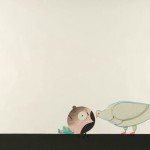



This is video of a talk given last year by David Dixon, assistant professor of math, science and engineering at Saddleback College in California. He used to work in the Physics Department at California Polytechnic State University, which, like many physics departments around the world, received loads of correspondence from non-scientists who thought they had come up with earth-shattering, game-changing hypotheses that needed to be shared.
Now, sometimes, laypeople come up with good ideas that should be explored. But many of these letters are better classified as the work of cranks — folks who had big ideas, cared deeply about those big ideas, but who were dead wrong ... and utterly impervious to the idea that they might be wrong.
In this talk, Dixon delves into the collection of crank letters received by California Polytechnic State University over the years to explain the hallmarks of crankitude, the behaviors that raise red flags for professional scientists, and what we can actually learn about real science by studying fake science.
YouTube says the video is over two hours long, but that's apparently inaccurate. The actual talk is an hour long and just somehow got loaded twice into the same video.
If this is a topic that interests you, I'd also recommend reading this MetaFilter thread, where scientists explain to a poster why the poster's friend is setting off crank red flags with scientists whose attention he's trying to capture. It's a fascinating look at what to do and what not to do if you have a hypothesis you want to share.
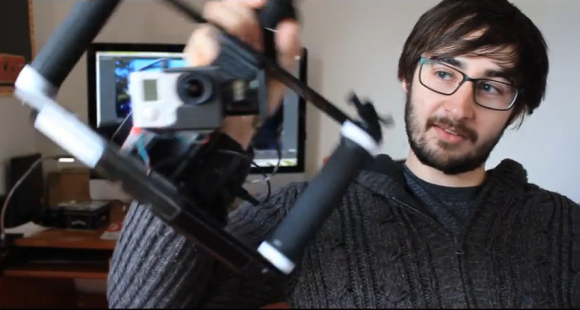
Here’s [Tom Parker] showing off a brushless motor gimbal stabilizer for his GoPro camera. We saw a similar project a couple of weeks back that featured a 3d printed quadcopter mount. This offering is meant to be held in your hands. It keeps the subject in frame even if the cameraman’s hands pitch and roll (we figured aeronautical terms were best here). This image shows him demonstrating a level camera as he quickly rolls the frame from one side to the other. It doesn’t compensate for yaw, which is something he may change in the next iteration. We already like the results he’s getting with it.
About 3:15 into the video demo below we get a very quick description of the build itself. He started it as a project at University. Fabrication included work on a 3D printer, laser cutter, and vacuum forming machine. The grips are bicycle handlebar components. To overcome the stabilization system the operator has access to a joystick. Without this you’d never be able to aim the camera up or down because of auto-leveling.
| Ads by Project Wonderful! Your ad could be here, right now. |
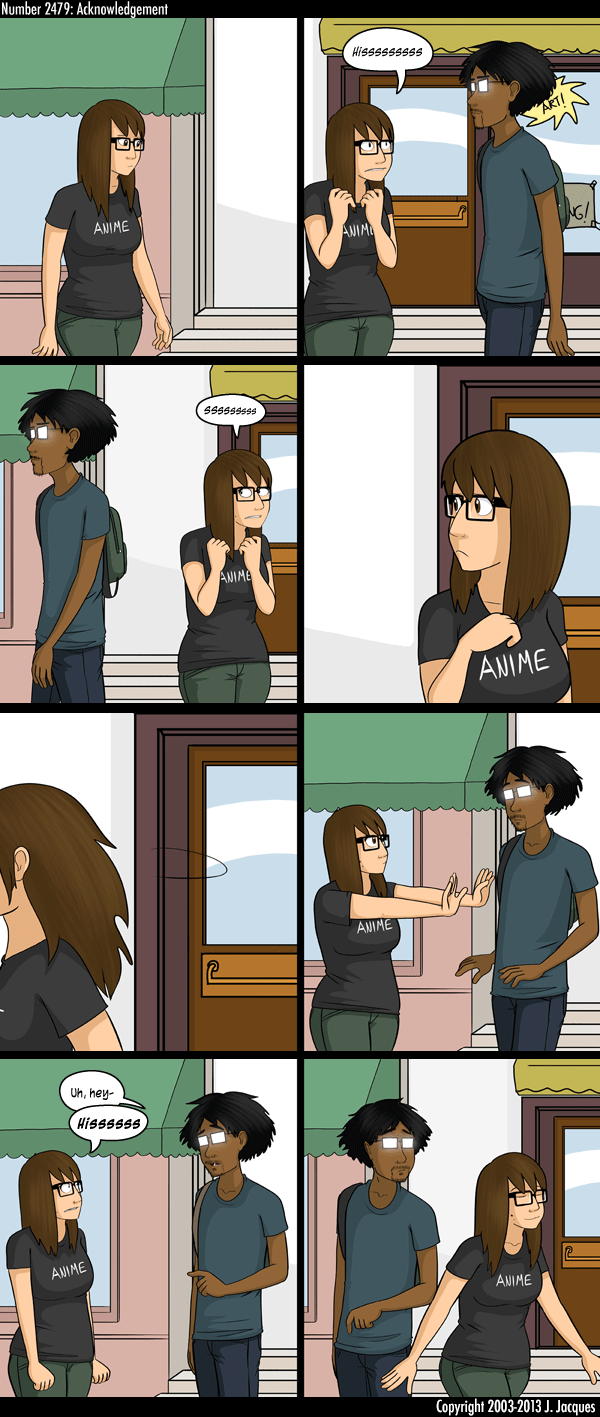
Alternate, possibly even funnier, version over on my Tumblr.
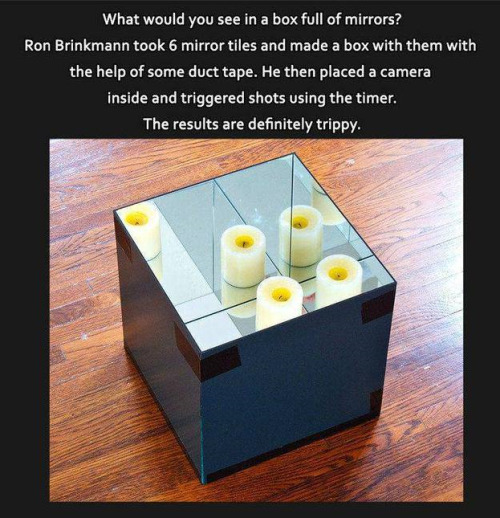






via thatscienceguy:
I have always wondered what would happen with an infinite loop in all directions…
Trippy.
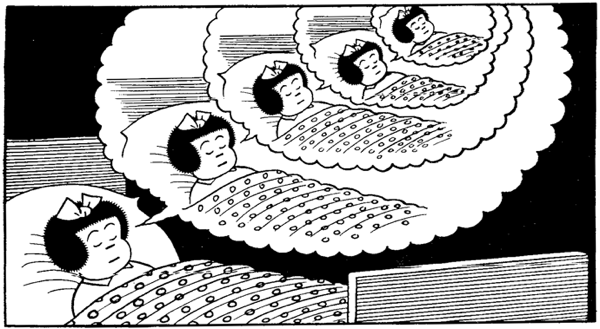
Max Hawkins's "Call in the Night" is an "experimental radio show" presenting recordings of people who volunteered to be woken up by a phone call to discuss their dreams, worries, emotions, and experiences. It's rather compelling and beautiful. You can sign up to be called at CallInTheNight.com.![]()
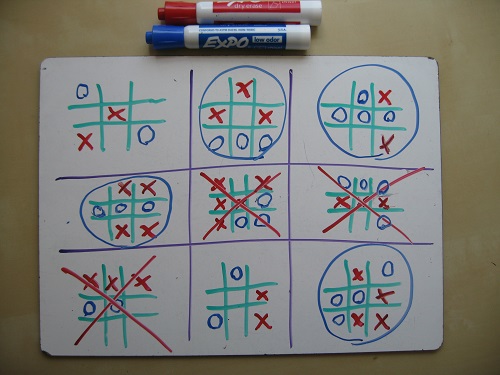
Want to play a game of Tic-Tac-Toe that's genuinely challenging and hard? Try "Ultimate Tic-Tac-Toe," in which each square is made up of another, smaller Tic-Tac-Toe board, and to win the square you have to win its mini-game. Ben Orlin says he discovered the game on a mathematicians' picnic, and he explains a wrinkle on the rules:
You don’t get to pick which of the nine boards to play on. That’s determined by your opponent’s previous move. Whichever square he picks, that’s the board you must play in next. (And whichever square you pick will determine which board he plays on next.)...
This lends the game a strategic element. You can’t just focus on the little board. You’ve got to consider where your move will send your opponent, and where his next move will send you, and so on.
The resulting scenarios look bizarre. Players seem to move randomly, missing easy two- and three-in-a-rows. But there’s a method to the madness – they’re thinking ahead to future moves, wary of setting up their opponent on prime real estate. It is, in short, vastly more interesting than regular tic-tac-toe.
Ultimate Tic-Tac-Toe (via Kottke) ![]()
![]()

While you’re trying to come up with an idea for your next project this guy’s been building his own helicopter from whatever parts he can find. He’s just one of the aeronautical hackers featured in a story in the Daily Mail. The article’s narrative leaves us with many questions, but there’s enough info to make it worth a look.
In addition to the heli seen above there are also a couple of airplane builds to gawk at. Africa has already produced a couple of very ingenious hacks like [William Kamkwamba's] projects which improved his village infrastructure. He gained enough notice from his work to land a scholarship to continue his education and that opportunity has also been afforded the creators of these aircraft.
At first we figured this helicopter project was possible because of lack of air traffic regulation in this part of the world. That’s not the case as [Onesmus Mwangi] — who makes his living as a farmhand – has been forbidden to fly the craft by local police. There may be another opportunity for him to fly later in life. He’s received funding to study aircraft maintenance abroad.+
Unfortunately we couldn’t find any video of this thing in action. If that’s unacceptable to you try getting your fix from this human-sized octocopter.
[Thanks Brandon]

 Architects Specht Harpman converted a 425sqft Manhattan micro-apartment into an amazing, multi-tiered living space by building up into the apartment's 25' (!) ceilings. It's got a bit of that shipbuilder's vibe, with cabinets built into everything, including the staircases. I love the tiny swatch of grass, too. I live in a very small place, and looking at this makes me want to explore how to cram more into our little place -- we get about 650 sqft of livable space out of an 18' square/22' tall place that's laid out in two storeys. Using this kind of technique, it seems like we should be able to get a much more livable and spacious place.
Architects Specht Harpman converted a 425sqft Manhattan micro-apartment into an amazing, multi-tiered living space by building up into the apartment's 25' (!) ceilings. It's got a bit of that shipbuilder's vibe, with cabinets built into everything, including the staircases. I love the tiny swatch of grass, too. I live in a very small place, and looking at this makes me want to explore how to cram more into our little place -- we get about 650 sqft of livable space out of an 18' square/22' tall place that's laid out in two storeys. Using this kind of technique, it seems like we should be able to get a much more livable and spacious place.
Manhattan Micro-Loft | Residential | Specht Harpman ![]()
Steve Mould, Britain's Brightest's "science guy," showed that if you put coil a 50' chain of magnets in a jar and then casually toss out one end, the whole chain goes berzerk leaps and cavorts like an innocent colt on crystal meth, defying gravity and gravitas. In this video, Earth Unplugged gets Steve to explain what's really happening.
Amazing bead chain experiment in slow motion - Slo Mo #19 - Earth Unplugged (via IO9) ![]()

I’ve used the Fozzils ThinkFLAT Solo Pack for three years. It’s the smallest, lightest most packable plate, bowl, cup set I’ve seen for car camping and picnicking. It’s also durable and easy to clean. It’s the same basic design as the previously reviewed Orikaso campware, and more versatile and takes up less space than the previously reviewed Guyot Designs Squishy Bowls.
-- Elon Schoenholz
Fozzils ThinkFLAT Solo Pack: Cup, Plate, Bowl
$15
Available from Amazon

Procrastination is something that everyone deals with. It’s hard to place too much blame on ourselves though, as the internet offers an unlimited amount of alternatives to doing our work. Since that’s the case, what are some proven ways to combat procrastination? Let’s take a look!
What’s the deal with "cramming"? Remember your college days, where everyone would practically brag about how they were able to pull off a miracle all-nighter? The crazy thing is, although cramming is far from optimal in terms of the quality of work that is produced, it is quite useful in getting a fire lit under our asses, isn’t it?
According to a study on procrastination, this last minute hoorah is inspired by the fact that there is no way out. Better yet, this feeling can be controlled (without the worry and paranoia) by "pre-committing" to a task before it’s begun. There are a couple ways to go about this, depending on the severity of your lethargy.
One of the more extreme (and highly creative) alternatives is a web app called stickK, which allows you to pre-commit to a goal that you must complete by a certain deadline. Big whoop, how is that going to stop me from procrastinating? Well, before you can set a goal up, you have to lay down some cash, and if you miss your deadline the money becomes locked and is donated to a charity that you hate! You can select other options and you don’t have to put in money, but c’mon, go big or go home! Also, can you honestly think of a better way to get yourself to take action than an impending deadline that will send your hard-earned cash to an organization you despise? What if you knew that $50 was headed to a place like the Westboro Baptist Church if you don’t get that new wireframe/article/logo finished? I rest my case!
Two other less dramatic ways to achieve a similar effect are to do the following:
Motivation is inter-woven with what goals you make as well as the plans you construct to achieve them. In a surprising study on motivation, researchers found that abstract thinking about goals can actually help with discipline. In the most basic sense, “dreaming big” isn’t all that bad advice (though dreaming too much can be harmful, more on that later).
But there’s also the problem of setting up grandiose plans and becoming intimidated by your own lofty expectations. Since you don’t want to stop dreaming big, the best way to find a balance is to simply set “macro goals” and “micro quotas." Your goals should be the large scale things that you hope to accomplish, that much is obvious. But your quotas are what you must get done everyday to make it happen.
For instance, writer/designer Nathan Barry forced himself to write 1000 words per day come hell or high-water to get his 3 self-published eBooks done. The quota made each day approachable, and the goal was achieve because of it. Tim Ferris talks more about why even low quotas work in this video:
Basically, quotas help you take one day (or even hour) at a time, so setting the bar low can actually be beneficial, as it’s what gets you started. At the same time, these quotas shouldn’t impede on your long term goals, which help fuel the fire that keeps your motivation alive.
I’ve covered a plethora of research that shows "analysis paralysis" is one of the #1 causes of procrastination. Not knowing what to do is often worse than the work itself. That’s why you should always strive to hit the ground running for new commitments, especially in terms of how you start each and every day.
The night before, create a simple to-do list (forget apps, pen and paper!) that consists of 3 big things that you want to get done, and what work it will entail. Keep it at your desk for when you sit down, or in your bag if you commute to work, and get it out right away when it’s time to get down to business. With a clear list of what to work on right now, you won’t have to stare at a long list of obligations that should get done “someday.”
Being too hard on yourself for procrastinating isn’t healthy. In fact, this study shows that self-blame is definitely counter-productive. The study examined study habits in particular, and had this to say:
“Forgiveness allows the individual to move past their maladaptive behavior and focus on the upcoming examination without the burden of past acts to hinder studying.”
Now, that doesn’t mean you should just give up, but rather that you shouldn’t let the fact that you don’t want to do something make you feel bad. Hell, if you read books like Daily Rituals, you’ll see that many great writers struggled with their work ethic throughout their entire career. Instead, you should try to redirect your worst procrastination sessions into anything productive.
For instance, when I just can’t get myself to sit down and write, I will do small tasks that still need to get done, like answering support emails. While this technique can lead to ‘busybody’ work if you aren’t careful, it can also get you in the mood to work during periods where you have to do something. This research points out that it’s important to evaluate each task to make sure you aren’t engaging in "automatic behavior":
Often our behaviour is robotic. We do things not because we’ve really thought about it, but because it’s a habit or we’re unconsciously copying other people. This type of behaviour can be an enemy of goal striving. Ask yourself whether what you are doing is really getting you closer to your goal.
As long as the task you are redirecting to is still relevant to your goals, (say, finishing up some edits instead of creating a new article), it’s okay to forgive yourself and redirect your behavior.
According to an academic study titled The nature of procrastination, there appear to be four pillars of procrastination that influence the population at large. Identifying which pillar is stopping you from doing a certain task may be helpful in overcoming the initial barrier in getting started. After all, research on the Zeigarnik Effect shows us that getting started really is the toughest part!
Here are the 4 pillars:
Fantasies about the future are generally okay to have and are all in good fun. But excessive fantasizing has been proven to be a goal killer and a huge reason people procrastinate (it tends to tie in with perfectionism). According to this study on motivation and fantasies, when you ‘build castles in the sky’ you may be sabotaging real, obtainable goals. The researchers tested subjects on how commonplace fantasizing about their future was, and followed up on their performance on a number of categories.
Take those subjects looking for a job. Those who spent more time dreaming about getting a job, performed worse. Two years after leaving college the ‘dreamers’:
Not good! But we also know that positive visualizations can be motivating and inspire us to push ourselves, so what’s missing? According to this study from the UCLA, the mistake is in what we visualize. Researchers found that those participants who engaged in visualizations that included the process of what needed to be done to achieve the goal (ex: fantasizing about learning another language, and visualizing themselves practicing every day after work) were more likely to outperform their peers.
There were two reasons the visualization the process worked:
So don’t fret your day dreams, just make sure you’re not solely focusing on the rewards of the “good life” without remembering the very doable steps that are necessary to make it happen!
“No fear. No distractions. The ability to let that which does not matter truly slide.”
Wise words from the notorious Fight Club, and a final lesson on procrastination that I’d like to impart. For many of us, procrastination comes from an overload of obligations. Our ability to say “no” to things that aren’t really moving us towards our goals is a tough skill to learn, but since it becomes impossible to tackle difficult tasks when we’re suffocating under a bunch of meaningless obligations, it’s necessary that we acquire it. Productivity requires radical elimination. It may seem selfish, but you’ve got to take care of yourself before you can take care of anyone else!
6 Scientific Tactics to Stop Procrastinating | Bidsketch
Gregory Ciotti loves small businesses & startups and gets nerdy about behavioral psychology on his blog Sparring Mind.
Want to see your work on Lifehacker? Email Tessa.
Le réalisateur Luigi Pane a imaginé avec l’agence DLV BBDO Milano pour Yamaha cette superbe vidéo présentant le « Dark Side of Japan ». Produite par abstract:groove, cette création nous plonge dans un Tokyo peu mis en avant dans les médias, sombre et intrigant. Une superbe vidéo à découvrir dans la suite.









While arguments will likely flare over just how 'miserable' the occupants of Louisiana are relative to those of Minnesota, based on Bloomberg's quantification of 'misery' these two states are the most and least miserable in our Union. Based on thirteen factors, ranging from child poverty rates to pollution, income inequality, and mental health it seems New Mexico and West Virginia are moving up the most miserable ranks most rapidly year over year.
(Click image for huge legible version)
Via Bloomberg:
Thirteen variables from the United Health Foundation's America's Health Rankings were isolated to determine each state's Misery Score. For each variable, the state with the maximum misery value received 100 points, while the state with the minimum value received zero points. All other states received points in proportion to where their values fell between the two extremes. Each state's 13 scores were then averaged for a final Misery Score. A higher score indicates greater misery.
As a woman, you do become less fertile as you get older, eventually culminating in menopause and the end of your potential babymaking years. But what does "less fertile" mean, and at what age, and how quickly does the drop-off in fertility happen?
According to this really fascinating piece by Jean Twenge at The Atlantic, some of the commonly cited scare stats — that one in three women ages 35 to 39 will not be pregnant after a year of trying, say — are based on extremely old data collected from historical birth records that don't necessarily reflect what's happening with real women who are alive right now. That statistic mentioned above, for instance, comes from French records (likely those collected by local church baptismal registries) for the years 1670 to 1830.
That matters because fertility is affected by things like quality of nutrition, infection rates, and even childhood illnesses — all of which have changed drastically for the average Western woman since the 19th century.
Look at more modern records, and the outlook for post-30 babymaking is completely different.
Surprisingly few well-designed studies of female age and natural fertility include women born in the 20th century—but those that do tend to paint a more optimistic picture. One study, published in Obstetrics & Gynecology in 2004 and headed by David Dunson (now of Duke University), examined the chances of pregnancy among 770 European women. It found that with sex at least twice a week, 82 percent of 35-to-39-year-old women conceive within a year, compared with 86 percent of 27-to-34-year-olds. (The fertility of women in their late 20s and early 30s was almost identical—news in and of itself.) Another study, released this March in Fertility and Sterility and led by Kenneth Rothman of Boston University, followed 2,820 Danish women as they tried to get pregnant. Among women having sex during their fertile times, 78 percent of 35-to-40-year-olds got pregnant within a year, compared with 84 percent of 20-to-34-year-olds. A study headed by Anne Steiner, an associate professor at the University of North Carolina School of Medicine, the results of which were presented in June, found that among 38- and 39-year-olds who had been pregnant before, 80 percent of white women of normal weight got pregnant naturally within six months (although that percentage was lower among other races and among the overweight). “In our data, we’re not seeing huge drops until age 40,” she told me.
Read the full story by Jean Twenge at The Atlantic
Image: Baby Emily, a Creative Commons Attribution No-Derivative-Works (2.0) image from kittwalker's photostream
In the latest episode of the web edutainment series Thug Notes, SparkySweets walks us through Harper Lee's 1960 American classic novel To Kill a Mocking Bird while keeping it real.
Note: this video contains some language; viewer discretion is advised.
Submitted by: Unknown (via YouTube)